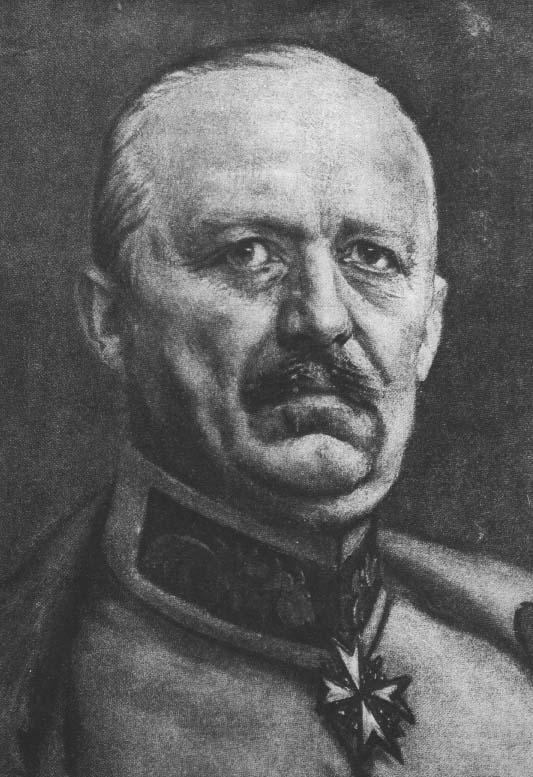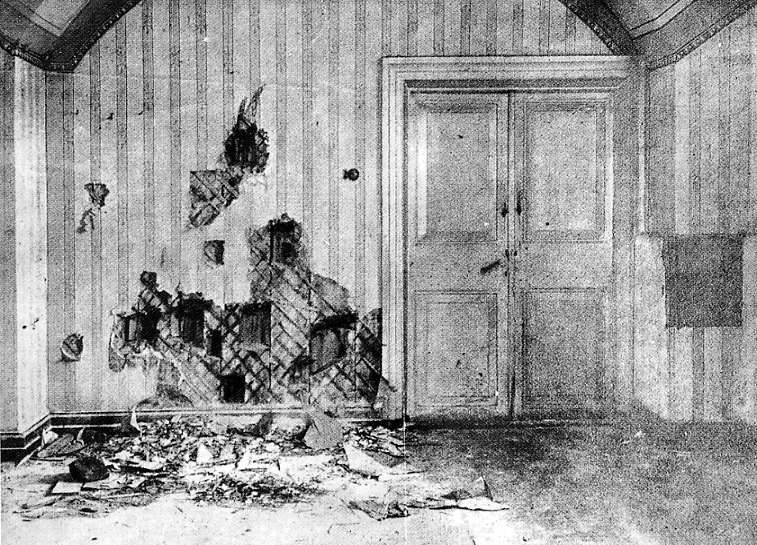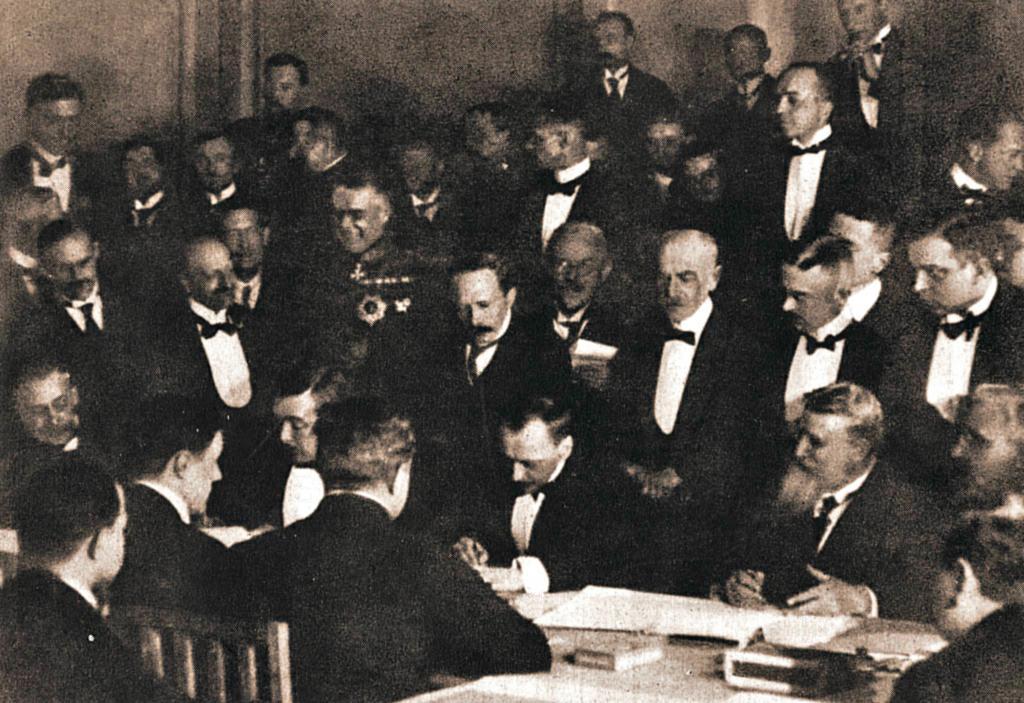13. "THE GREAT WAR" (WORLD WAR ONE)

1918

1918
 Russia drops out of the war
Russia drops out of the war
 Germany's spring offensive – "Operation
Germany's spring offensive – "Operation
Michael" – March - June 1918
 The Germans begin to fall back –
The Germans begin to fall back –
summer of 1918
 Russia collapses into civil war
Russia collapses into civil war
 The Germans are forced into deep
The Germans are forced into deep
retreat – September - November 1918
The textual material on page below is drawn directly from my work
A Moral History of Western Society © 2024, Volume Two, pages 93-96.
RUSSIA
DROPS OUT OF THE WAR |
| Lenin
began almost immediately after taking control of the Russian capital to
look for the best way out of the war with Germany. He sent
Trotsky to negotiate with the Germans at Brest-Litovsk. In
December both sides agreed to an armistice and an opening of
peace negotiations. A war of nerves then ensued as the Germans
demanded harsh terms from Russia in the form of territory to be given
up and expensive reparations payments to be made to Germany. But
the Germans were also in a hurry to get something agreed on. At
one point negotiations broke down ... and the Germans made ready to
march towards Petrograd (the Russians at this point barely had an army
to defend themselves by). Thus the Russians gave in first. In early March the announcement was made to the world that a formal peace had been agreed on by the two parties. It would constitute a very huge loss for Russia. But it did give Lenin the peace he needed to pursue his revolution in Russia. And it gave the Germans the clearance they needed to vacate the Eastern Front and reposition their army in the West. |


Imperial War Museum, London

The treaty took away a third of Russia's population, half of her industry and nine-tenths of her coal mines. But it enabled the Communists to focus their full efforts at securing their rule over what remained of the former Russian Empire. A huge and extremely bloody civil war was about to begin.

WILSON'S FOURTEEN POINTS |
AMERICA
IS FULLY MOBILIZED |








By Paul Thompson, April 1918
National Archives

National Archives
National Archives

National Archives
GERMANY'S
SPRING OFFENSIVE "OPERATION MICHAEL" – MARCH - JUNE 1918 |
| The
Germans of course at that moment had other ideas than Wilson's.
On March 21 the Germans began their assault on three points on the
Western Front; at the Somme (March 21-April 5), the Lys (April 9-29)
and the Aisne (May 27-June 4). Although these drove deep wedges
into the Allied lines (especially at the Somme) they failed to break
through French and British lines. By early June the Germans were
exhausted. |



Imperial War Museum
AMERICA
IS FULLY ENGAGED AT THE FRONT ... AND THE GERMANS BEGIN TO FALL BACK – SUMMER
1918 |
| The British and French merely assumed that the American one and a half million troops would be blended into their own ranks as reserves. But the American commander Pershing insisted that Americans fight as an integral unit at various points along the front. Finally the allies relented and American troops took their positions along the line. The newly arrived troops were eager to go, and gave a fresh spirit to the allies as they pushed the Germans back at Belleau Wood at the center of the front (June-July) and at St. Mihiel (September) and the Argonne Forest in the Verdun region (September-October). |



National Archives
National Archives


National Archives
National Archives of Canada

National Archives
National Archives
(one doughboy has just taken a hit from German fire)
National Archives

from four years of German occupation
United States Army
Because of their victory
at St-Mihiel, American troops head into
the Argonne Forest with spirits running high
National Archives
National Archives
USSC, National Archives
National Archives

treats American wounded from the first day's action (September 26)
National Archives

Fierce fighting accompanies the American advance through the villages of the Meuse valley (a dead German lies next to the tank)
National Archives
National Archives
LENIN'S
COMMUNISTS BEGIN THE CONSOLIDATION OF THEIR POWER IN
RUSSIA ... AND THE COUNTRY COLLAPSES INTO CIVIL WAR |

where Communists executed the Czar and his family - July 16, 1918
Time Inc.
Western allies do not consider either Lenin's "Armistice" with Germany or his claim to rule Russia as a "done deal" and intervene directly in Russian affairs to give support to the "Whites" (an uneasy combination of Kerensky's Democrats and the Tsarists) who are involved in a bitter resistance campaign (or civil war) with Lenin and Trotsky's "Reds."
The United States is represented." Vladivostok, Russia - September 1918
National Archives
THE
GERMANS NOW ARE FORCED INTO A DEEP RETREAT – SEPTEMBER - NOVEMBER 1918 |
|
The big push
Meanwhile the British, led into battle by their huge tanks, advanced strongly at the Somme (September) ... and the French, along lines just below the British, combined with the British to push the exhausted Germans back to the point that by the beginning of November the Germans were nearly out of France and much of Western Belgium. The German lines were collapsing rapidly. |

Imperial War Museum, London
Imperial War Museum, London


Imperial War Museum, London

Imperial War Museum, London


National Archives
National Archives
THE
AIR WAR |

National Archives

National Archives

National Archives

ARMISTICE (NOVEMBER 11, 1918) |
| Now
Wilson’s Fourteen Points looked very attractive to the Germans.
They were running out of military supplies and food (the urban
population back in Germany was struggling to survive near-famine
conditions). Thus in early October Wilson received a message from
Germany requesting an armistice and peace negotiations along the lines
of Wilson’s Fourteen Points. But Wilson was probing to see
exactly on whose part the request was made: the German imperial
government ... or the German people. Meanwhile U-boat attacks on American shipping continued ... and Wilson hardened his terms for an armistice: he would deal only with a post-imperial government. German hopes were dashed ... and protests began to rise from the German left calling for Wilhelm’s abdication and the creation of a German republic. Rebellion in the streets now spread rapidly and Bavaria became the first German state to proclaim itself a republic. Berlin then came under control by revolutionaries. It was time for Wilhelm to make his escape. But the military would not promise their protection ... and finally on November 9, Wilhelm made his way into exile in the Netherlands. Seeing the imminent collapse of Germany Pershing wanted to push the war all the way into Germany to make it clear to the Germans that a new international status quo was now in force. But British commander Haig and French commanders Foche and Pétain felt that it was time to bring the war to an end ... just where things presently stood. Nonetheless on November 8 the Allied commander presented the German commanders in their discussions at Compiègne a number of very strong concessions imposed on Germany as terms required for a cease fire. The Germans were given until November 11 to respond. Finally in the early hours of the 11th the Germans agreed to the terms and a general armistice was announced to go into effect at 11:00 later that same morning. Tragically however the shelling and slaughter continued right up to the very last minute of the war. But at 11:00 it was finally over. |

The trains which brought
the two sides together at Compiègne for Armistice negotiations
November
1918

Officers in the forest of
Compiègne after reaching an agreement for the armistice that ended
World
War I.
This railcar was given to Ferdinand
Foch for military use by the manufacturer, Compagnie Internationale des Wagons-Lits.
Foch is second from the right.
President Wilson reading
the Armistice terms to Congress. November 11, 1918.
photo by Sgt Vincent J.
Palumbo.
National Archives

Jubilant Harlem Hellfighters
(369th Infantry) - on return from Europe after serious combat against
the Germans (they were the first to reach the Rhine River) (3/4s of the 200,000 "Colored"
troops served as menials during the war)
National Archives

US soldiers excited to be
leaving training camp at Camp Dix, New Jersey - late 1918
(122,500 soldiers were killed
or missing, 237,135 wounded during the war)
National Archives
Medal of Honor and Croix
de Guerre winner Alvin York and his mother back in Tennessee (in the 1918 Meuse-Argonne
offensive he charged a German machine-gun nest by himself, killed 25 Germans and captured
132 others in two separate forays)

Londoners celebrating the
Armistice

Go on to the next section: Recovery

Go on to the next section: Recovery






































